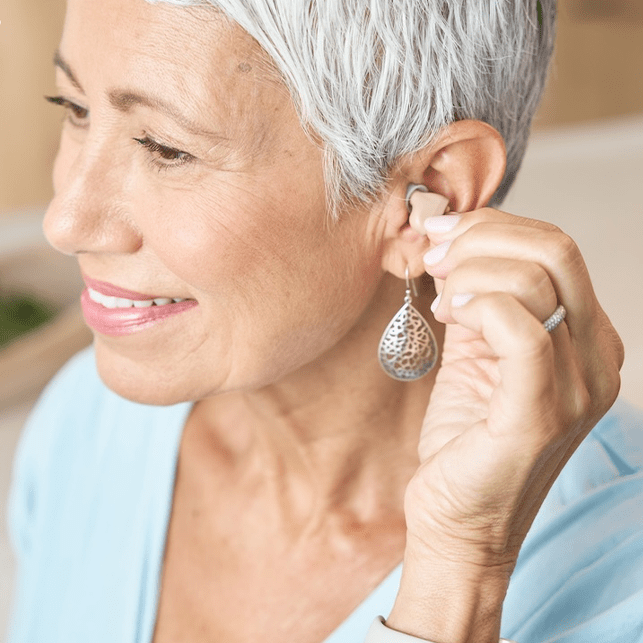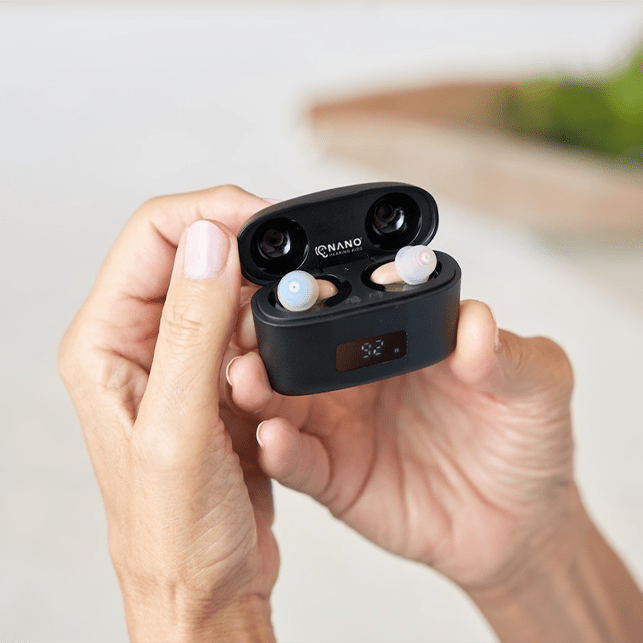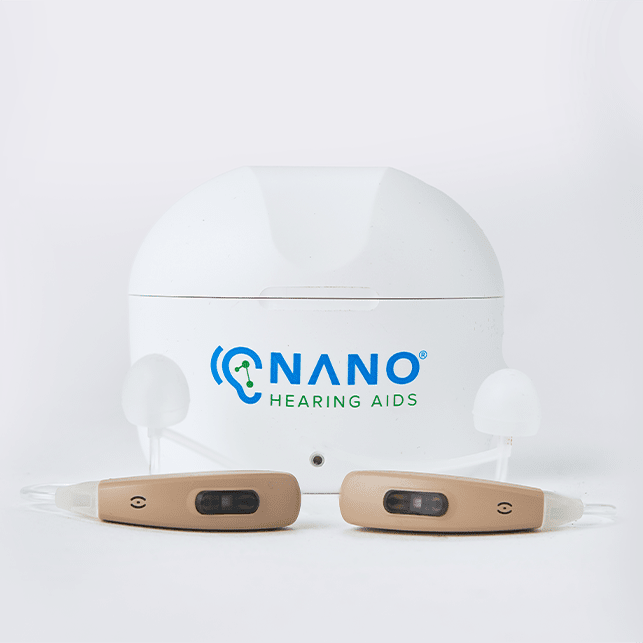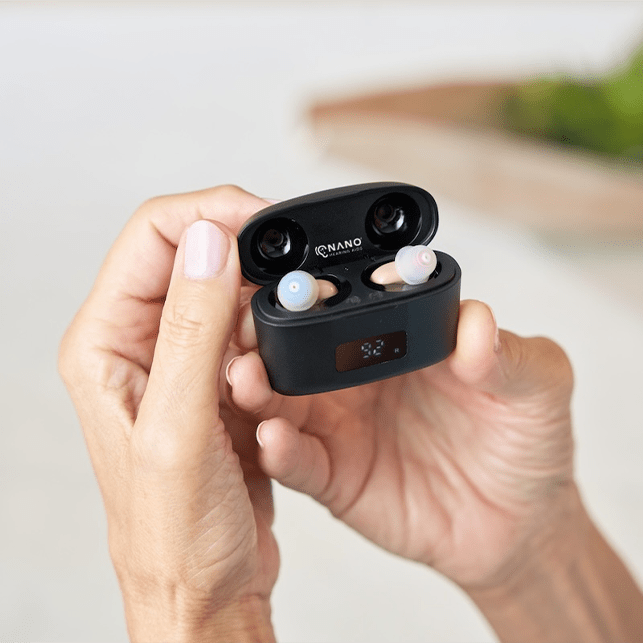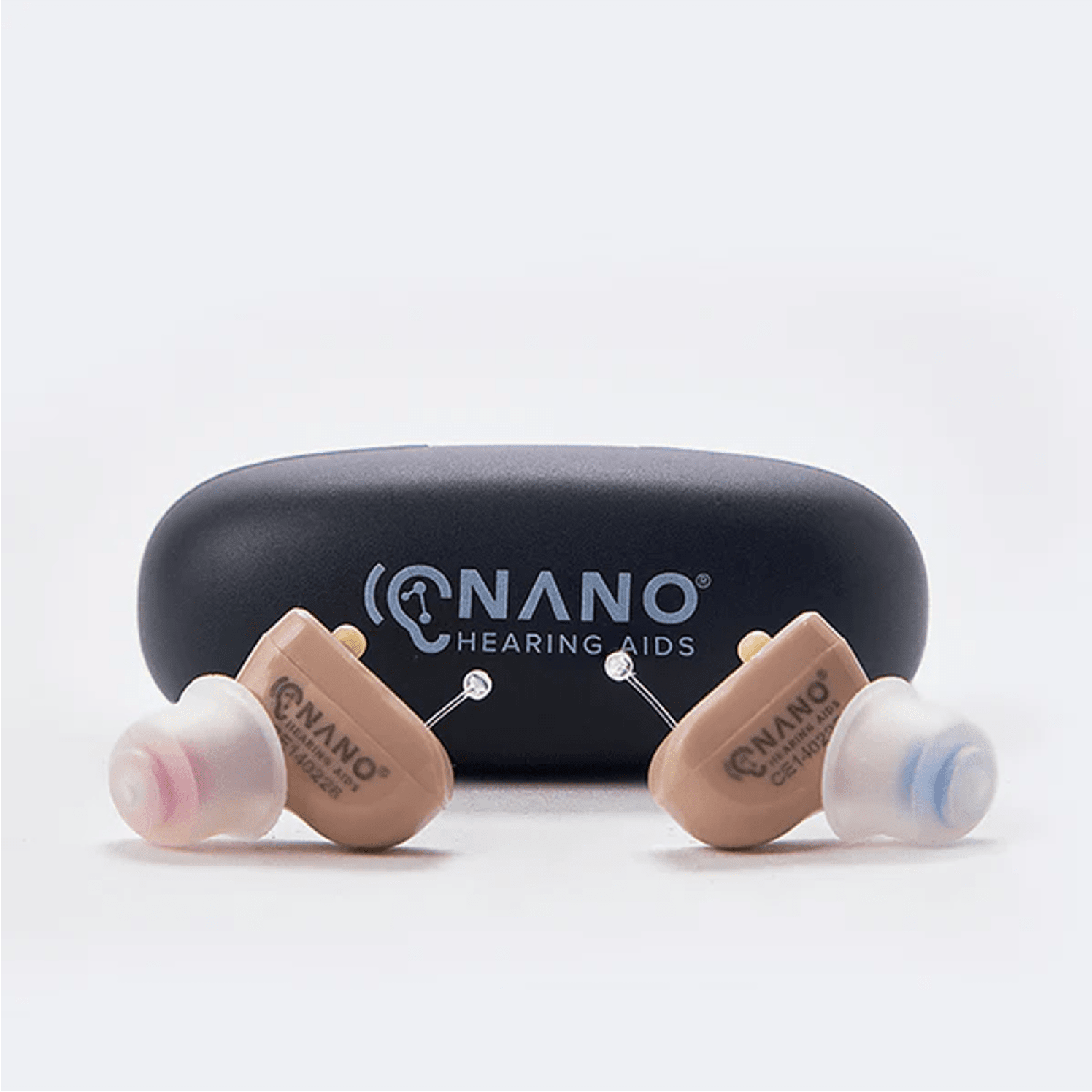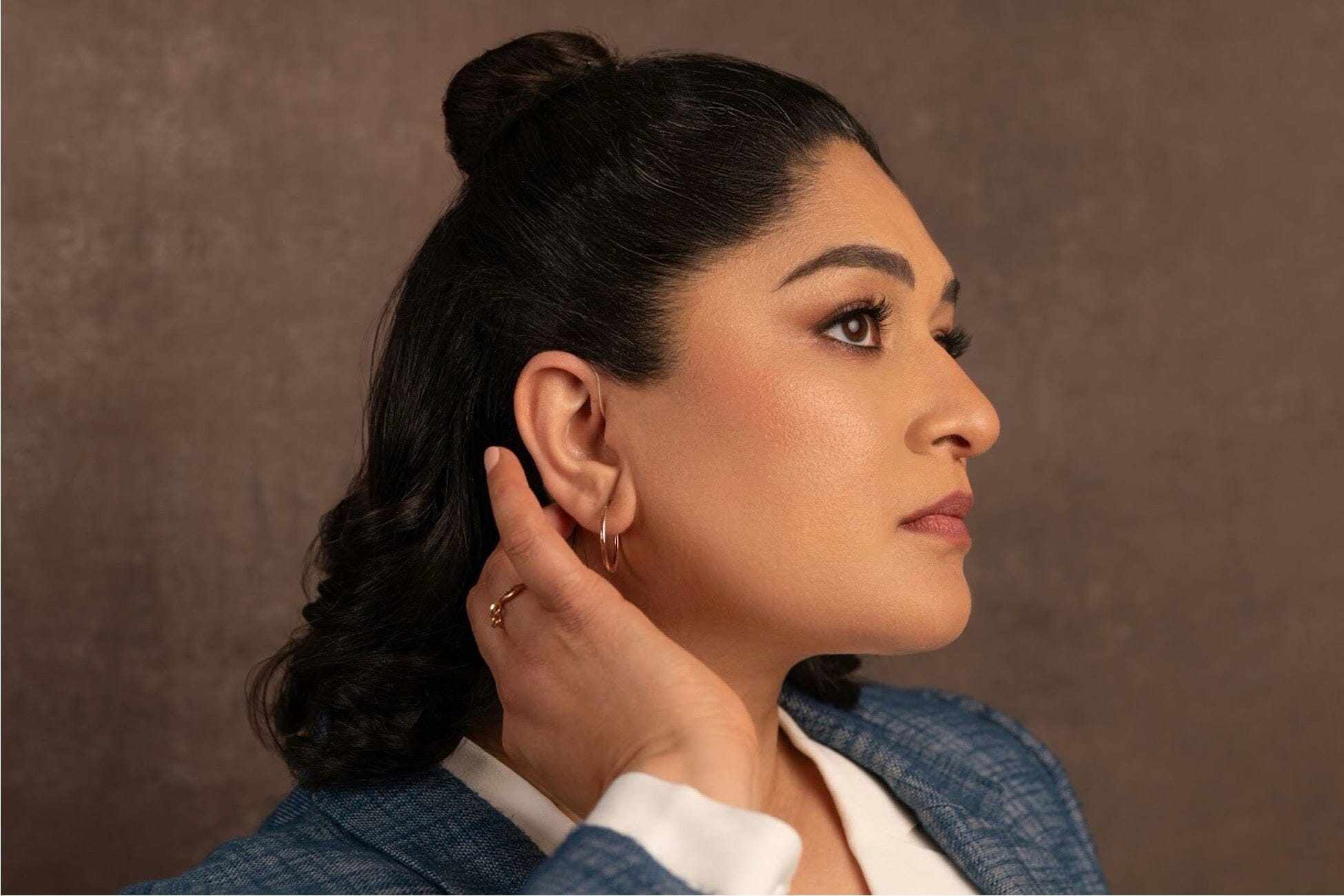Choosing the right hearing aid is a significant step towards improved hearing, better communication, and a higher quality of life. For example, imagine being able to fully engage in conversations at a busy restaurant or enjoy your favorite music without missing a beat. By understanding the differences between various types of hearing aids and recognizing the degree of your hearing loss, you’re more likely to find the best hearing aid for your needs.
OTC Hearing Aids vs. Prescription Hearing Aids
OTC Hearing Aids
OTC hearing aids are ideal for individuals with perceived mild to moderate hearing loss. They are readily available for purchase online and at major retailers. They do not require a prescription, making them convenient and affordable for those who are 18 years old or older.
Symptoms of perceived mild to moderate hearing loss include difficulty hearing soft sounds or following conversations in noisy environments. You might often ask people to repeat themselves or need to increase the volume on your TV or radio.
Hearing aid technology has significantly evolved over the last few years, giving OTC hearing aid users a wide variety of modern hearing aids and designs to choose from without compromising quality.
CIC (Completely in the Canal):
CIC hearing aids are best for those with perceived mild to moderate hearing loss who prioritize aesthetics since CIC models are nearly invisible to others as they fit deep within the ear canal.
